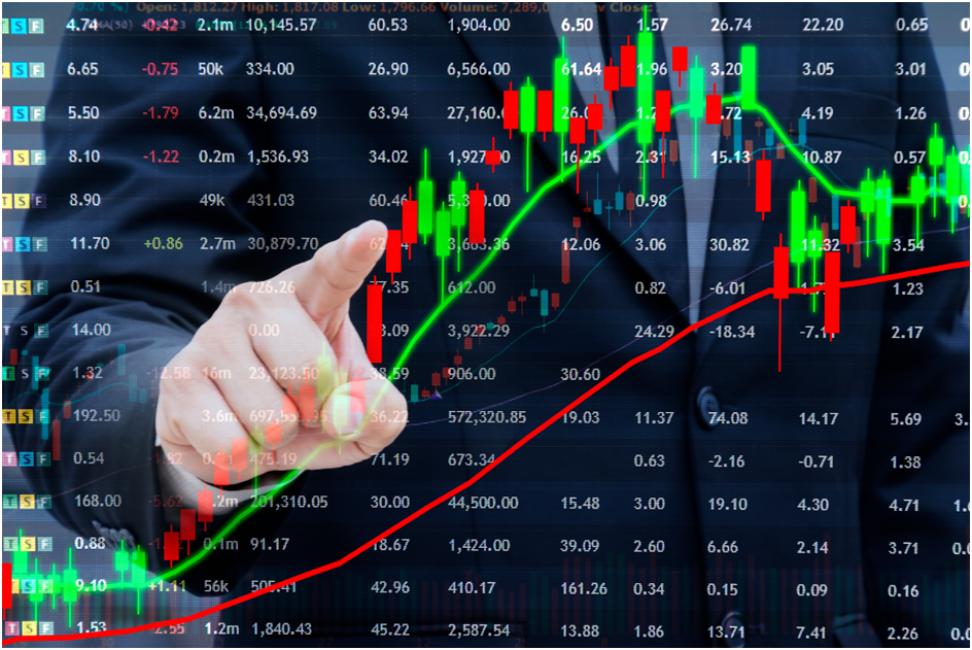Margin trading is a popular strategy in the world of finance that allows investors to borrow funds to increase their buying power in the market. In this article, we will explore the ins and outs of margin trading, including its risks and benefits, to help you make informed investment decisions.
Understanding the Basics of Margin Trading
Margin trading is a practice where an investor borrows funds from a broker to purchase more assets than they could with their own capital. This allows traders to amplify their potential profits, as they can invest in larger positions with borrowed money. However, margin trading also comes with significant risks, as investors can incur substantial losses if the value of their investments decreases. Additionally, traders must maintain a minimum level of equity in their account, known as the maintenance margin, to ensure they can cover any losses and repay the borrowed funds. It is important for investors to understand the risks and requirements of margin trading before engaging in this practice.
Benefits of Margin Trading
Margin trading allows investors to leverage their capital and potentially increase their profits by borrowing funds from a broker to trade larger positions than they could with just their own capital. This can lead to higher returns on investment if the trades are successful. Additionally, margin trading can provide more flexibility and liquidity in trading, as investors can enter and exit positions more easily. However, it is important to note that margin trading also carries higher risks, as losses can exceed the initial investment amount. Investors should always carefully manage their risk and use proper risk management strategies when engaging in margin trading.
Risks Associated with Margin Trading
Margin trading involves borrowing funds from a broker to increase the size of a trader’s position in the market. While this can amplify potential profits, it also comes with significant risks. One major risk is the potential for substantial losses, as traders can end up owing more money than they initially invested if their trades go against them. Additionally, margin trading can lead to margin calls, where the broker demands additional funds to cover losses, potentially forcing the trader to liquidate their position at a loss. High levels of leverage can also increase the volatility of a trader’s portfolio, making it more susceptible to market fluctuations. Overall, margin trading requires careful risk management and a thorough understanding of the potential downsides to avoid significant financial losses.
Margin trading can be a lucrative opportunity for experienced investors, but it also comes with its fair share of risks. It is crucial to carefully consider the potential downsides before diving into this type of trading. One way to mitigate these risks is by using an MTF that offers real-time monitoring and risk management tools. By utilizing such a platform, traders can stay informed and make informed decisions to protect their investments.
How Does Margin Trading Work?
Margin trading allows investors to borrow funds from a broker to purchase securities, leveraging their buying power. This means that investors can potentially increase their returns by using borrowed money to make larger investments. However, margin trading also comes with higher risks as losses can exceed the initial investment if the market moves against the investor. Margin accounts require investors to maintain a minimum balance, known as the maintenance margin, to cover potential losses. If the value of the account falls below this threshold, the broker may issue a margin call and require the investor to deposit additional funds or sell securities to cover the shortfall.
Margin Trading vs. Regular Trading
Margin trading involves borrowing funds from a broker to trade assets, allowing traders to leverage their positions and potentially increase their profits. However, it also carries higher risks as traders can lose more than their initial investment if the trade goes against them. On the other hand, regular trading involves buying and selling assets using only the funds in the trader’s account, without any borrowed money. While regular trading may offer more security as traders are limited to their available funds, it may also limit their potential for higher returns compared to margin trading. Ultimately, the choice between margin trading and regular trading depends on an individual’s risk tolerance and trading strategy.
Margin Trading Terms You Need to Know
Margin trading involves borrowing funds from a broker to purchase investments, with the securities in the investor’s account serving as collateral. There are several important terms to understand when engaging in margin trading. First, the initial margin is the amount of equity that must be deposited in the account to open a margin position. Maintenance margin refers to the minimum amount of equity that must be maintained in the account to keep the position open. Margin call occurs when the account falls below the maintenance margin, prompting the broker to request additional funds or securities to bring the account back into compliance. Lastly, the margin interest rate is the rate charged by the broker for borrowing funds to trade on margin. Understanding these terms is crucial for managing the risks and opportunities of margin trading effectively.
When it comes to margin trading, it is crucial to stay informed and up-to-date with the latest market trends. One way to do this is by using a reliable Share Market App that provides real-time updates and analysis on various stocks and indices. By utilizing this app, investors can make well-informed decisions and maximize their profits in the fast-paced world of trading.
Setting Up a Margin Trading Account
To set up a margin trading account, you will need to open an account with a brokerage firm that offers margin trading services. You will need to provide personal information, such as your name, address, and social security number, as well as financial information, such as your income and net worth. Once your account is approved, you will need to deposit funds into the account to use as collateral for margin trades. It is important to understand the risks involved in margin trading, as you can potentially lose more money than you initially invest. Make sure to carefully read and understand the terms and conditions of your margin trading account before making any trades.
Strategies for Successful Margin Trading
Margin trading can be a profitable strategy for investors, but it also carries a high level of risk. To be successful in margin trading, it is important to have a solid understanding of the market and the assets you are trading. Setting clear risk management strategies, such as setting stop-loss orders, can help protect your investment and prevent significant losses. Additionally, it is crucial to carefully monitor your margin levels and be prepared to add more funds to your account if necessary to avoid margin calls. It is also important to stay disciplined and not let emotions drive your trading decisions. By carefully managing risk and staying informed, investors can increase their chances of success in margin trading.
When it comes to successful margin trading, having the right tools and resources at your disposal is crucial. One such tool is HDFC SKY, a comprehensive platform that offers advanced trading features and real-time market data to help investors make informed decisions. With HDFC SKY, traders can access a wide range of investment options and manage their portfolios with ease. To learn more about how HDFC SKY can enhance your margin trading strategies, visit HDFC SKY today.
Common Mistakes to Avoid in Margin Trading
Margin trading can be a risky endeavor, and there are several common mistakes that traders should avoid to prevent significant losses. One of the biggest mistakes is overleveraging, where traders borrow too much money to invest, increasing their potential profits but also their potential losses. It is important to carefully manage leverage and only trade with funds that you can afford to lose. Another mistake is not setting stop-loss orders, which can protect against large losses if the market moves against your position. Additionally, traders should avoid emotional decision-making and stick to their trading plan, as impulsive decisions can lead to costly mistakes. By being mindful of these common pitfalls, traders can improve their chances of success in margin trading.
Margin Trading Regulations and Guidelines
Margin trading regulations and guidelines are put in place by financial regulatory authorities to ensure that investors are protected and that the market operates efficiently. These regulations typically set limits on the amount of leverage that can be used for margin trading, require minimum margin requirements, and mandate risk management practices to prevent excessive losses. By following these regulations and guidelines, investors can engage in margin trading in a responsible manner while minimizing the potential for financial instability in the market.
Is Margin Trading Right for You?
Margin trading can be a powerful tool for experienced investors looking to potentially amplify their gains in the market. However, it is not without its risks. Before deciding if margin trading is right for you, it is important to consider your risk tolerance, financial goals, and level of experience in the market. Margin trading involves borrowing funds from your brokerage to buy securities, which can lead to substantial losses if the market moves against you. It is crucial to have a solid understanding of how margin works, as well as a disciplined approach to managing risks. If you are confident in your ability to navigate the complexities of margin trading and are prepared to handle the potential downsides, it may be a suitable strategy for you.
When considering whether margin trading is the right choice for you, it’s important to stay informed about the latest trends and updates in the stock market. One way to do this is by using the Skyline app, which provides real-time data and analysis on stock market movements. By staying up to date with market news and trends, you can make more informed decisions when it comes to margin trading. To download the Skyline app, click stock market.
Additional:
- How U.S. Is Building A Net-Zero World: Clean Energy Manufacturing Abroad
- Patriot Day Ceremony Held In Memory Of The Lives Lost During 9/11 At Gloucester County
- Bernstein’s Research Report Says India’s Economy Is 16.5 Years Behind China’s. What Are Your Thoughts?

